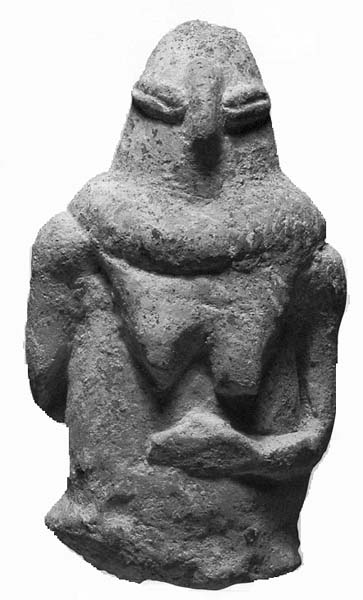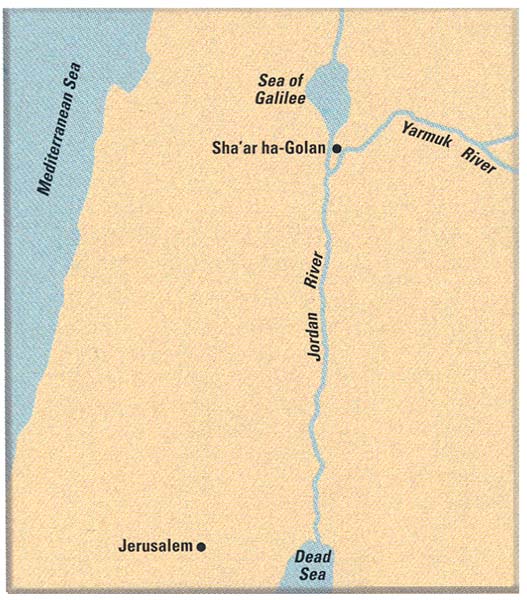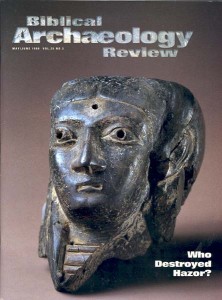
With its features blunted by time, this primordial-looking figure appears only half formed. Resting one hand on her belly, the 2-inch-tall female figurine has coffee-bean-shaped eyes, a large nose, and breasts, and wears a thick scarf around her neck. A deep hole in the base was used to affix the figurine to a pedestal, a standard or, perhaps, the now-lost lower half of the body. This figurine is thought to have been a fertility statue or, possibly, a divine image.
Fashioned by an unknown craftsman of the Yarmukian culture, which flourished in central Israel and Jordan some 8,000 to 7,500 years ago, the statuette was excavated recently at Sha’ar ha-Golan, on the bank of the Yarmuk River just south of the Sea of Galilee.
Recent excavations have unearthed a trove of flint, pottery, art objects, stone artifacts and animal bones at Sha’ar ha-Golan. Unfortunately, some 200 prehistoric art objects from the site have been gathered by farmers, not excavators, and thus their original context and use is unknown. Nevertheless, the site is Israel’s largest prehistoric art center and the country’s earliest planned village with monumental architecture.

Already a library member? Log in here.
Institution user? Log in with your IP address.

